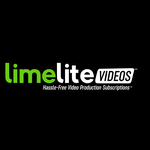Release Forms
 Updated
by LimeLiteVideos
Updated
by LimeLiteVideos
Release Forms for On-screen Subjects
You’ve done all the prep work for your LimeLite video shoot, now you’re ready for production … almost. Before filming begins, you need to make sure that you have signed release forms for people who will appear on camera. You may also need release forms for content that includes private property.
A signed release form protects your business from potential legal issues when publishing video content. It’s important to understand when you will and will not need them. Read the information below to learn more.
Who is Responsible for Release Forms?
If you added an onsite producer to your video project, we’ve got you covered—LimeLite producers will take care of the release forms for you. However, if you choose not to use an onsite producer, you will need to obtain the signed release forms prior to (if possible) or during filming.
If your company doesn’t have its own release form, no worries. To ensure your legal bases are covered, LimeLite provides them for you. You have three options:
- Download and use the release forms provided by LimeLite
- Download and modify our release forms to meet your needs
- Provide and/or use your own release form
Click below to download the appropriate release form:
When to Use a Release Form
If you take videos/photos of people, places, or things and publish them, you need permission. Understanding when to use a video/photo release form will save you the headache of copyright infringement issues.
Video/Photo release forms, also known as model release forms, are used when people, pets, and property are filmed and published. In this situation, you need to obtain a signed release form from the subject, or from the owner of the pet or property featured in the images. A release form does not grant permission to take the video/photo, but rather to publish it.
Requirements for Publishing Images
Anyone is allowed to take video/photos of anyone or anything in a public space. If the content is for personal enjoyment, nothing else is required—you don't need a release form or permission.
If you wish to publish the content, however, you will need a signed release form that documents that permission was given by the subject, guardian of the subject, or the owner of the property in the video/photo. Publishing content means that the video/photo will be used for promotional purposes. Without a signed photo release form, any promotional and commercial use is prohibited. The essential elements of a release form include:
- Full name of the subject or model
- A statement that expressly gives permission to use their likeness in any digital media format (e.g., photo, video, website, and other web-related publications) without payment
- Right to digitally alter the image (if applicable)
- Release of any and all copyright ownership or claims
Two Types of Photo Release Forms
You'll need a specific release form depending on who or what is being filmed. Understanding which form applies and keeping these forms close at hand will make the process pain free. Here are your options:
- Talent/Model Release Form: If the main subject is an adult, use this form.
- Property Release Form: To publish a video/photo of someone's property—such as a private home, business location, vehicle, flower garden, or even a pet—the owner must sign this form.
